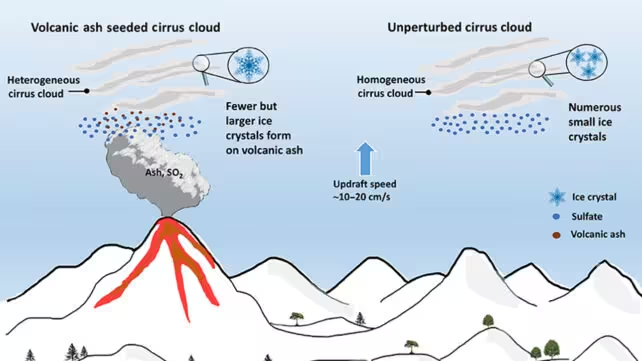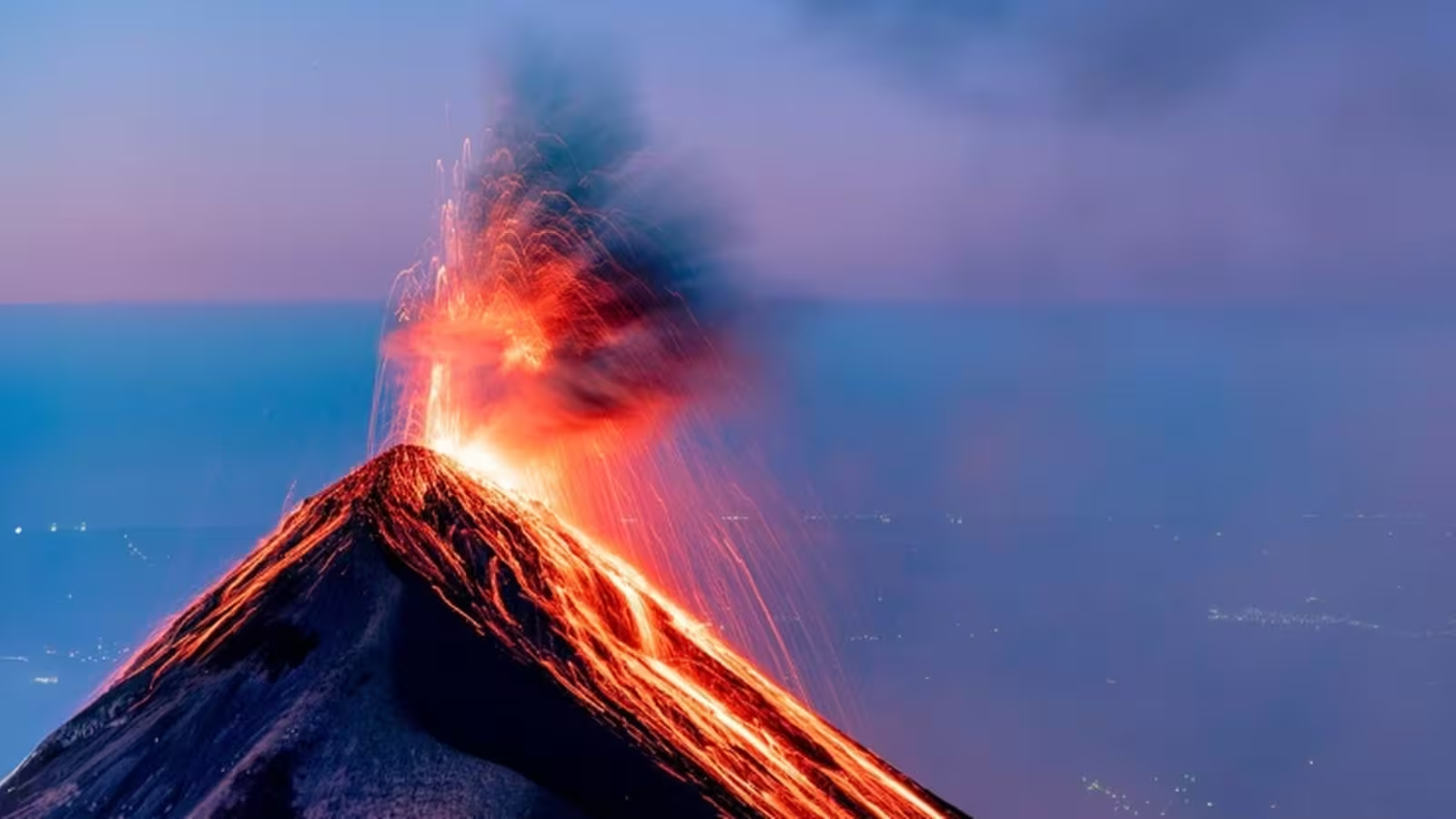4 Minutes
Understanding the Connection Between Volcanoes and Atmospheric Ice Clouds
Satellite technology has unveiled a key link between volcanic eruptions and the formation of high-altitude ice clouds known as cirrus clouds. For decades, scientists have recognized the influence that volcanoes exert on Earth's climate systems. These powerful natural phenomena release vast quantities of gases and ash into the upper atmosphere, but the precise way volcanic particles contribute to cloud formation has remained a fundamental question—until now.
Scientific Background: The Climatic Impact of Volcanoes
Active volcanoes inject gases like carbon dioxide (CO₂) and sulfur dioxide (SO₂) into the atmosphere, altering global temperatures by either trapping heat or reflecting sunlight. Beyond gases, eruptions propel fine particles of ash and dust, collectively known as volcanic aerosols, into areas where atmospheric clouds typically form. Aerosols are instrumental in cloud nucleation—a process where airborne particles provide a surface for water molecules to condense and freeze into ice crystals. Cirrus clouds, recognized by their thin and wispy appearance far above Earth's surface, play a crucial role in modulating the planet’s energy balance by reflecting solar radiation and trapping infrared heat.

Unveiling the Mystery: Satellite Observations and New Discoveries
The breakthrough emerged from a decade-long analysis led by researchers at Lawrence Livermore National Laboratory (LLNL). Leveraging data from NASA’s CloudSat and CALIPSO (Cloud-Aerosol Lidar and Infrared Pathfinder Satellite Observations) missions, the team tracked how properties of cirrus clouds changed in the aftermath of three significant volcanic eruptions.
CloudSat is designed to probe deep into cloud layers to monitor structural differences and their influence on tropical cyclones and broader climatic shifts. Meanwhile, CALIPSO tracks both clouds and aerosols, providing crucial data on their collective role in regulating Earth's weather, climate, and air quality.
The research found that after eruptions rich in volcanic ash, cirrus clouds in the upper atmosphere became more frequent. Yet, contrary to initial hypotheses, these clouds contained not more, but fewer ice crystals—with those present being significantly larger. This discovery overturned the team’s previous assumptions that extra aerosols would seed a higher number of smaller ice particles. Instead, water vapor condensed onto volcanic ash particles before reaching temperatures cold enough for spontaneous freezing, promoting the growth of larger aggregates of ice. "Our research helps close a significant knowledge gap about whether and how volcanic eruptions influence cloud formation," explained Dr. Lin Lin, atmospheric scientist at LLNL.

Key Implications for Climate Science and Atmospheric Modeling
This new understanding is pivotal for improving global climate models. Since clouds cover approximately 70% of Earth’s surface at any given moment and are a fundamental component of the planet’s hydrological cycle, deciphering the mechanisms of ice nucleation is essential for predicting future climate patterns. The unique finding—that volcanic ash leads to fewer but larger ice crystals in cirrus clouds—highlights a previously unaccounted-for variable in climate simulations.
Dr. Lin noted, "The results completely overturned our original expectations. Letting go of our initial idea and developing a new explanation based on unexpected findings was both the hardest and most rewarding part of the process."
Looking Forward: Future Research and Upcoming Eruptions
Building on these insights, Lin’s team has expanded their research to the study of Arctic clouds, assessing their influence within climate models that predict Earth’s atmospheric future. Researchers continue to await another significant volcanic eruption to validate and refine their new theories.
Conclusion
In summary, the latest satellite observations have illuminated a crucial mechanism by which volcanic eruptions foster the formation of unique cirrus clouds in Earth's upper atmosphere. By acting as nucleation sites for ice, volcanic ash fundamentally shapes the size and frequency of these clouds, influencing climate regulation and energy balance on a global scale. These findings not only sharpen our understanding of atmospheric science but also enhance our ability to model climate change accurately as volcanic activity persists in shaping our skies.
Source: doi



Comments